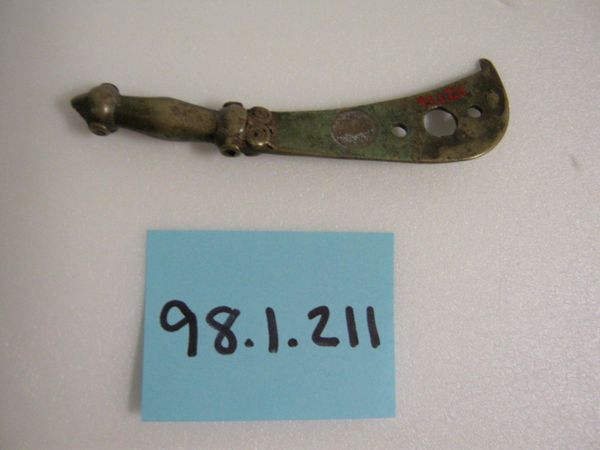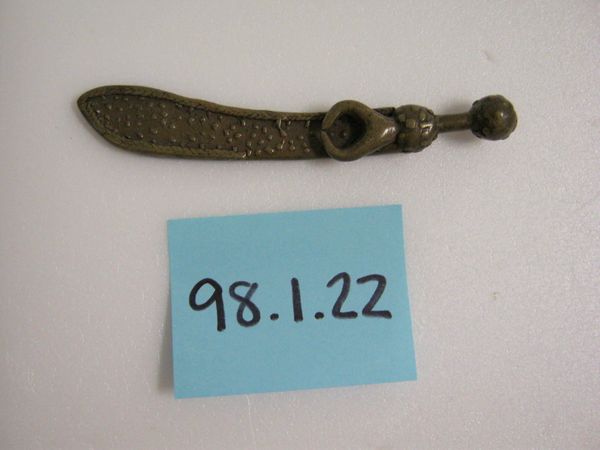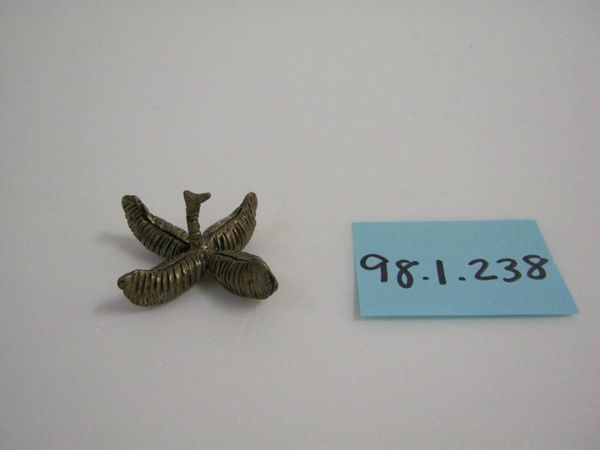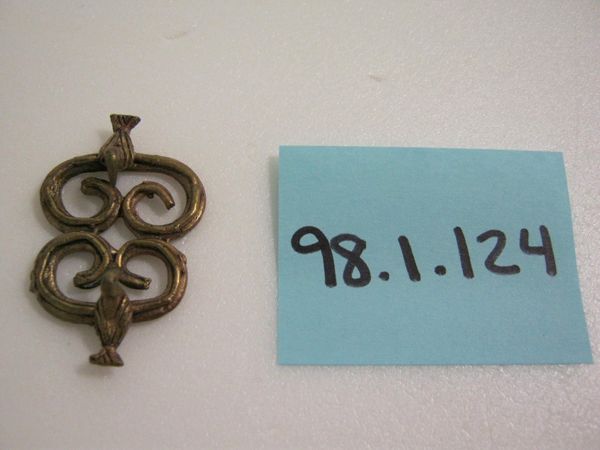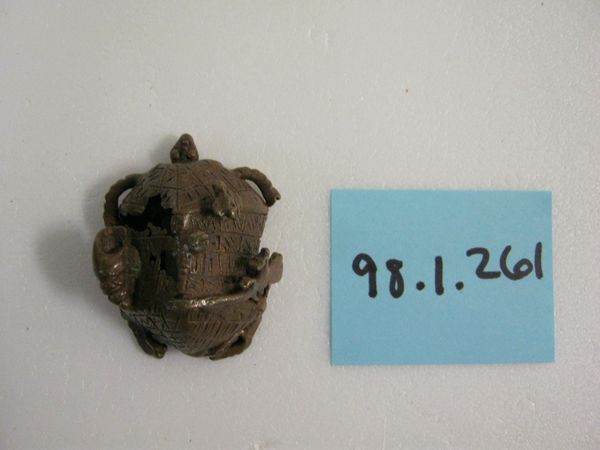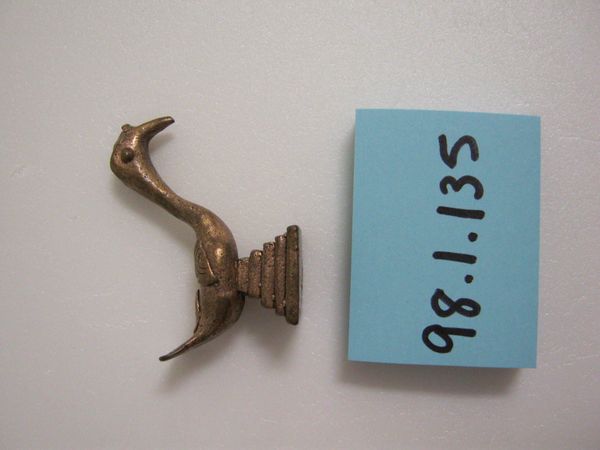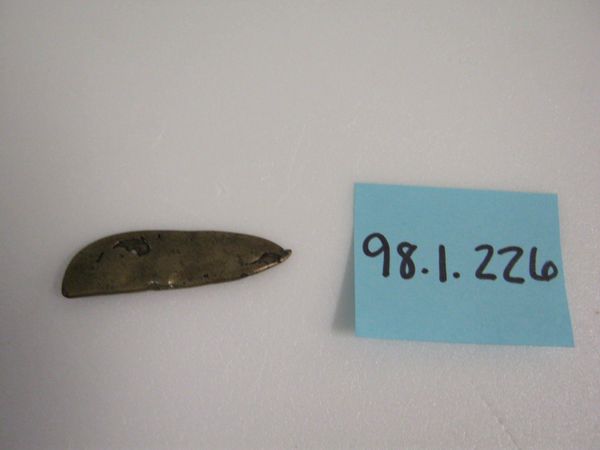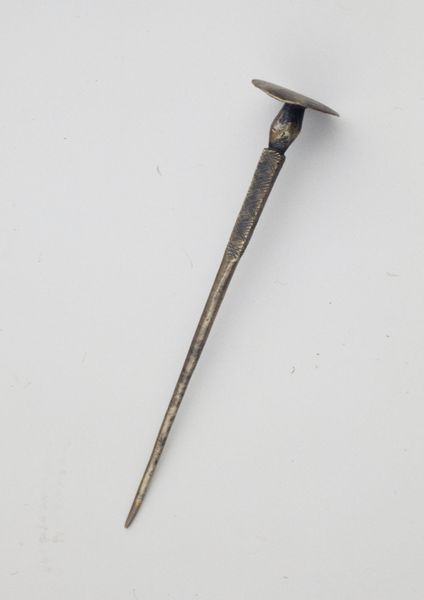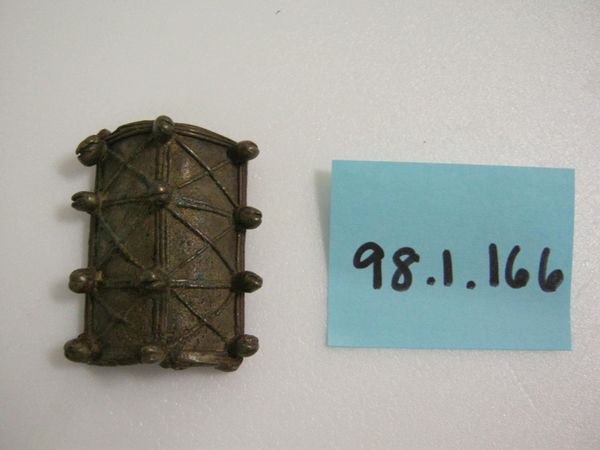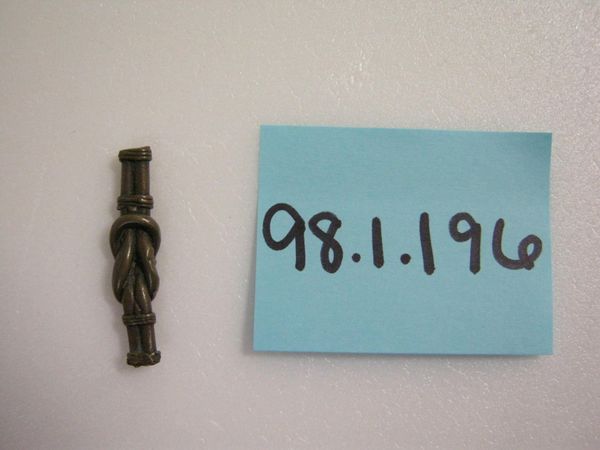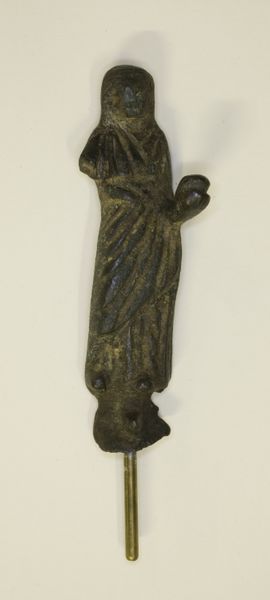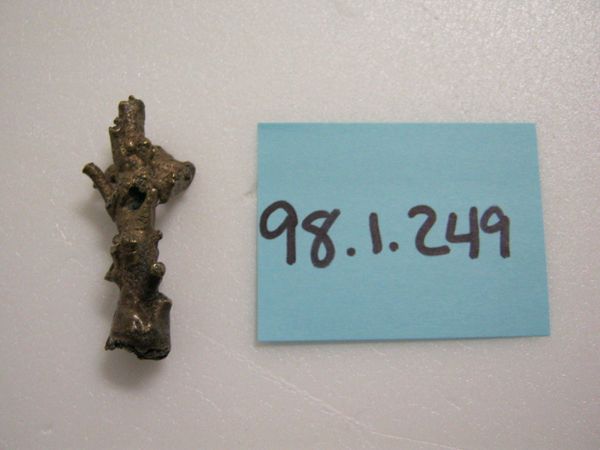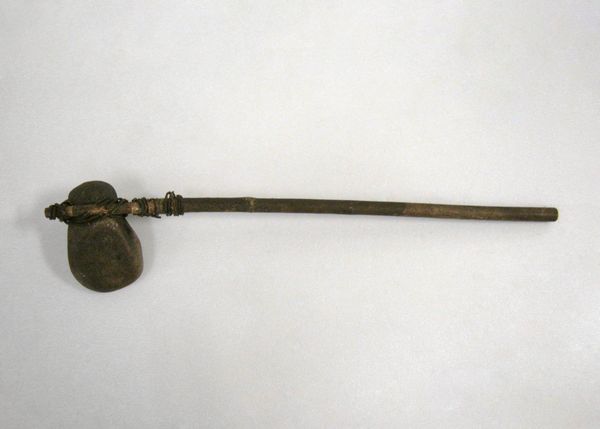![Goldweight [Double Gong] by Akan](/_next/image?url=https%3A%2F%2Fd2w8kbdekdi1gv.cloudfront.net%2FeyJidWNrZXQiOiAiYXJ0ZXJhLWltYWdlcy1idWNrZXQiLCAia2V5IjogImFydHdvcmtzLzM2OWE2NjgyLTZiYjAtNGI0ZC1iMWNiLTk3OTEwODYwNDg4NC8zNjlhNjY4Mi02YmIwLTRiNGQtYjFjYi05NzkxMDg2MDQ4ODRfZnVsbC5qcGciLCAiZWRpdHMiOiB7InJlc2l6ZSI6IHsid2lkdGgiOiAxOTIwLCAiaGVpZ2h0IjogMTkyMCwgImZpdCI6ICJpbnNpZGUifX19&w=3840&q=75)
brass, metal, sculpture
brass
metal
figuration
sculpture
Dimensions: 2 1/8 x 7/8 in. (5.4 x 2.22 cm)
Copyright: Public Domain
Editor: Right, so this is the "Goldweight [Double Gong]," an Akan piece from the 19th or 20th century, made of brass. It’s small but feels powerful, almost like a tiny ceremonial object. I am curious, what can you tell me about its historical role? Curator: Goldweights such as this weren’t simply decorative; they played a central role in the economic and social fabric of Akan society. Their function extended far beyond measuring gold. Think about the marketplace as a stage—each transaction a performance shaped by visual cues. These weights were statements about status, honesty, and cultural belonging. Does the form remind you of any specific type of music instruments? Editor: It says here in the title that it's a double gong? Curator: Precisely. Visual representations served as mnemonic devices and metaphors, communicating complex ideas in a largely oral culture. A merchant displaying a weight depicting a revered ancestor or a popular proverb signaled trustworthiness and knowledge of social norms. Consider this form of a musical instrument also and its importance in public and private events in local communities. Can you picture the sounds associated with the Gong, who do you think hears it and in what instances? Editor: Hmm, thinking about the context really shifts my understanding. It’s less an isolated art object, and more like a…symbol actively participating in the everyday life of its time. It goes beyond a measurement tool. It’s actually kind of a message carrier! Curator: Exactly. They were not merely tools but rather active participants in shaping social interactions and cultural narratives, serving the politics of trade.
Comments
No comments
Be the first to comment and join the conversation on the ultimate creative platform.
